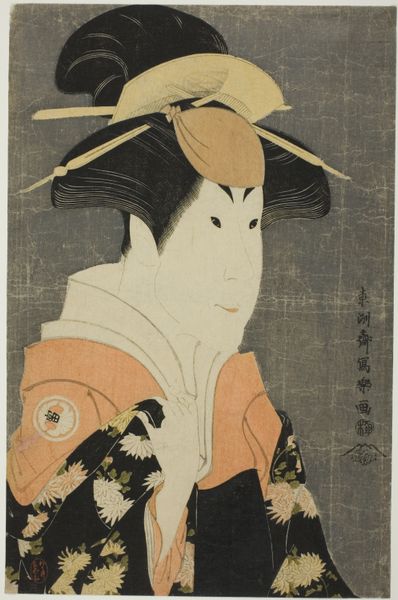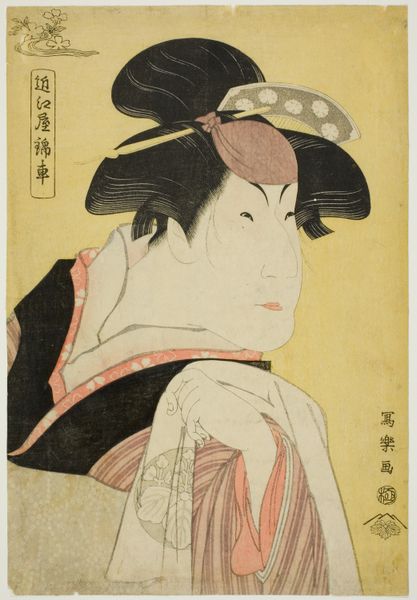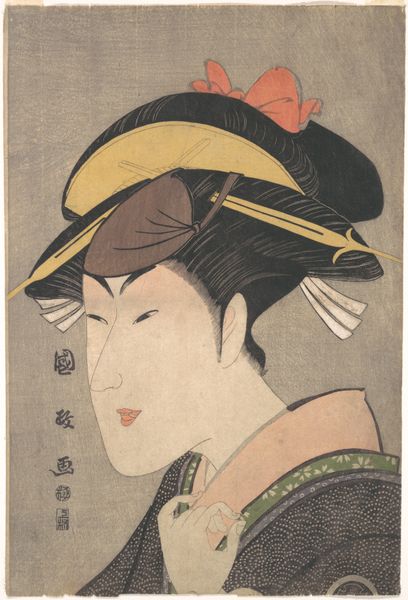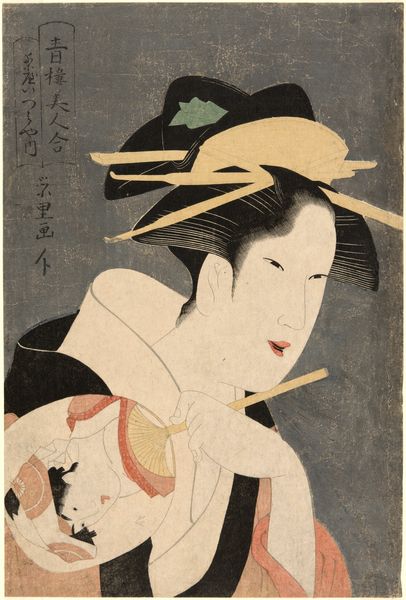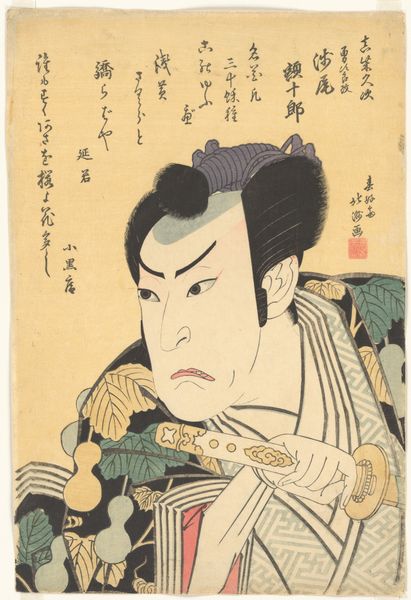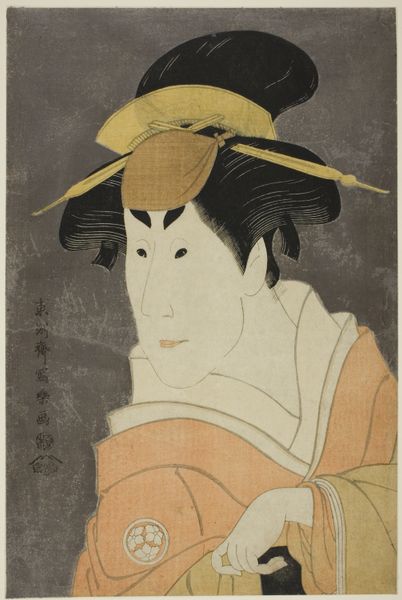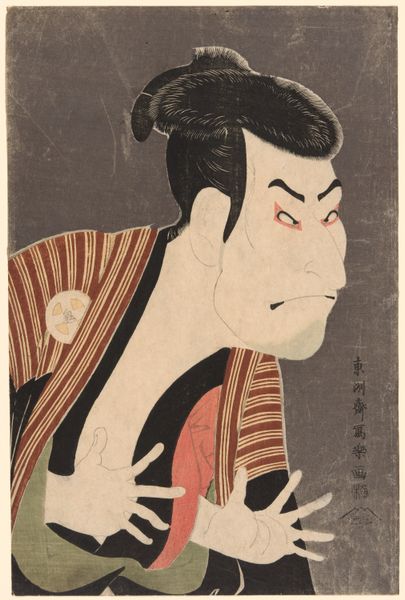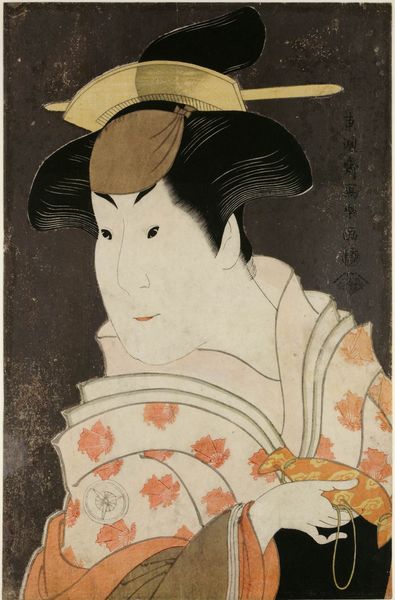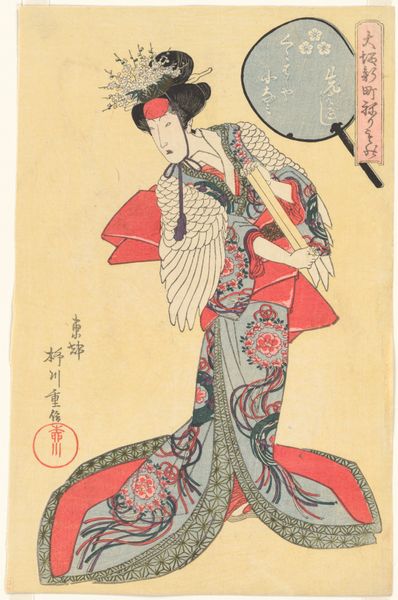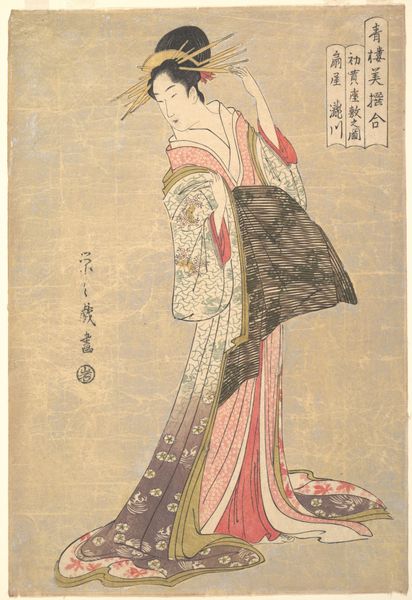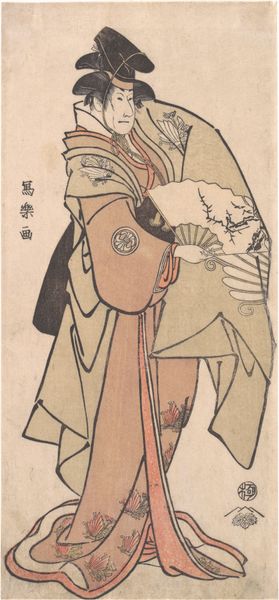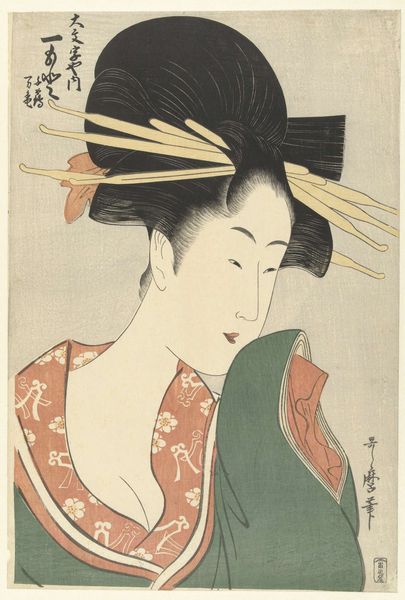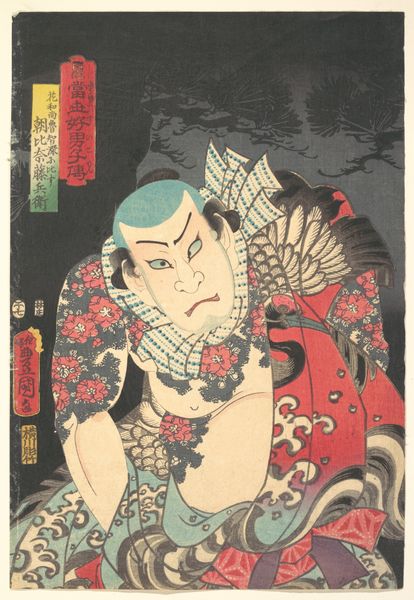
Segawa Tomisaburō as Yadorigi, Wife of Ogishi Kurando, by Tōshūsai Sharaku 1794
0:00
0:00
print, woodblock-print
#
portrait
# print
#
caricature
#
asian-art
#
caricature
#
ukiyo-e
#
figuration
#
woodblock-print
Copyright: Public domain
Curator: Tōshūsai Sharaku’s 1794 woodblock print, "Segawa Tomisaburō as Yadorigi, Wife of Ogishi Kurando," strikes me immediately. There's a muted elegance about it, a careful control within the lines. What’s your initial response? Editor: I'm immediately drawn to the expressiveness, even caricature, in the actor’s features. It challenges conventional portrayals of beauty in ukiyo-e, doesn’t it? What can you tell me about its historical context? Curator: Indeed, Sharaku's style was quite radical. He operated during the Kansei Reforms, a period of strict censorship attempting to curb perceived extravagance. Depicting actors—especially in this unidealized manner—was itself a form of social commentary. These actors often navigated restrictive social landscapes. The fact that it portrays a male actor performing the role of a woman, adds layers to its subversive potential. Editor: The emphasis on his long nose, almost avian, along with those thin, controlled eyes, seems almost mocking. Was this portrayal seen as disrespectful, or perhaps a commentary on the performative nature of identity itself? Is he making fun of performative femininity? Curator: Absolutely! His prints challenged the accepted aesthetic norms and poked fun at societal conventions, hinting at the fluid, performed aspect of identity – very topical considering his short burst of popularity aligned with rising dissatisfaction toward social rules. While there's no surviving proof that it was intended as such, placing it into today's discourse regarding drag shows definitely allows for it to challenge some gender constructs of the era. Editor: I’m particularly drawn to the emblems on the costume. Are those chrysanthemums? And that circular crest...are they symbolic cues offering insight into the character or the play itself? Curator: Precisely. Chrysanthemums represent the imperial house but, in a theatrical context, can suggest autumn, decline, and ephemerality, hinting at the transient nature of performance, but also life itself. And that specific crest signals her clan origins in the drama being portrayed on stage, providing contextual hints for the knowing viewer. These details helped ground his figures and establish Sharaku’s lasting resonance as something of an outlier in the world of Ukiyo-e. Editor: So, a snapshot of a very particular moment in culture. Thank you, those iconographic connections make this portrait much more eloquent. Curator: Yes. The collision of high art and low subject matter makes a powerful statement, even centuries later, doesn’t it?
Comments
No comments
Be the first to comment and join the conversation on the ultimate creative platform.
